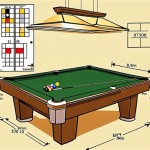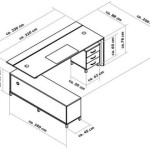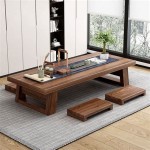Carpet Under Dining Table Ideas
The dining room often serves as the heart of a home, a space for gathering, celebrating, and creating memories. Choosing the right carpet for under the dining table can significantly impact both the room's aesthetic and its functionality. This article explores various carpet options, offering insights into selecting the perfect foundation for a stylish and practical dining space.
Durability and Stain Resistance
Dining areas are prone to spills and crumbs, making durability and stain resistance paramount when choosing a carpet. Opting for carpets made from solution-dyed fibers is a strategic choice. These fibers have the color embedded throughout, rather than just on the surface, making them exceptionally resistant to fading and staining. Additionally, carpets with a low pile, such as Berber or loop pile, are easier to clean and less likely to trap debris compared to high-pile options like shag.
Another factor to consider is the carpet's fiber density. A denser carpet will offer greater durability and resilience to wear and tear, especially in high-traffic areas like the dining room. Examining the carpet's face weight, which measures the amount of fiber per square yard, can provide an indication of its density and overall durability.
Size and Shape Considerations
Properly sizing the carpet is essential for creating a harmonious and functional dining area. The carpet should extend beyond the table's perimeter to accommodate chairs even when pulled out. A general guideline is to add at least two feet to the table's length and width when determining the carpet size. This ensures that the chairs remain on the carpet, preventing them from catching on the edge and potentially tipping over.
The shape of the carpet should complement the shape of the dining table. A rectangular rug typically works well with a rectangular or oval table, while a round rug can be a suitable choice for a round or square table. However, there are no hard and fast rules; experimentation with different shapes can create visually interesting and personalized spaces. Consider the overall dimensions of the room when choosing the carpet size and shape to avoid overwhelming the space or making it appear smaller than it is.
For larger dining rooms, using multiple smaller rugs or layering rugs can be an effective design technique. This can help define distinct areas within the room and create a more dynamic aesthetic. When layering rugs, it's important to consider texture and color contrasts to create visual interest and depth.
Color and Pattern Choices
The color and pattern of the carpet play a significant role in establishing the overall atmosphere of the dining room. Lighter colors can make the room feel larger and brighter, while darker colors can create a sense of intimacy and warmth. Neutral colors like beige, gray, and taupe offer versatility and can easily complement a variety of décor styles.
Bold patterns can add personality and visual interest to the space. Geometric patterns can create a modern and dynamic feel, while floral patterns can evoke a more traditional and romantic ambiance. When choosing a patterned carpet, consider the scale of the pattern in relation to the size of the room and the existing décor. A large-scale pattern might overwhelm a small room, while a small-scale pattern might get lost in a larger space.
Consider the existing color palette of the dining room when selecting a carpet. Choose a color that complements the wall color, furniture, and other décor elements. If the room features bold colors or patterns, a neutral carpet can provide a grounding element. Conversely, if the room has a more subdued color scheme, a patterned carpet can introduce a pop of color and personality.
Material Selection
Various carpet materials are available, each with its own set of benefits and drawbacks. Wool is a natural fiber known for its durability, softness, and natural stain resistance. It is also a renewable resource, making it an environmentally friendly choice. However, wool can be more expensive than synthetic options.
Synthetic fibers like nylon, polyester, and polypropylene offer excellent durability, stain resistance, and affordability. They are also resistant to fading and mildew. Nylon is particularly known for its resilience and ability to withstand heavy foot traffic, making it a suitable choice for busy dining areas.
Other options include natural fibers like sisal, jute, and seagrass. These materials offer a unique texture and can create a casual and inviting atmosphere. However, they can be less stain-resistant and more difficult to clean than synthetic options. Consider the level of maintenance required and the overall aesthetic desired when selecting a carpet material.

Should You Put A Rug Under Dining Table Furniturebox

Should You Put A Rug Under Dining Table Furniturebox

Rules Of Thumb For Rugs Under Round Dining Tables Inspiration

10 Tips For Getting A Dining Room Rug Just Right Houzz Au

A Rug Under The Kitchen Table Yes Even With Messy Kids Homes I Have Made

Rules Of Thumb For Rugs Under Round Dining Tables Inspiration

20 Dining Room Rug Ideas That Will Change Everything About Your Home
:max_bytes(150000):strip_icc()/image-asset4-a39fe97996a74a7eb4f47d4fc45a198f.jpeg?strip=all)
35 Dining Room Rug Ideas To Elevate Your Space

30 Rugs That Showcase Their Power Under The Dining Table

Simple Rules For Dining Room Rugs Floorspace








